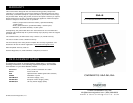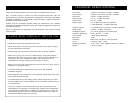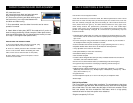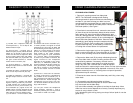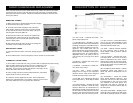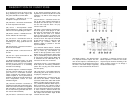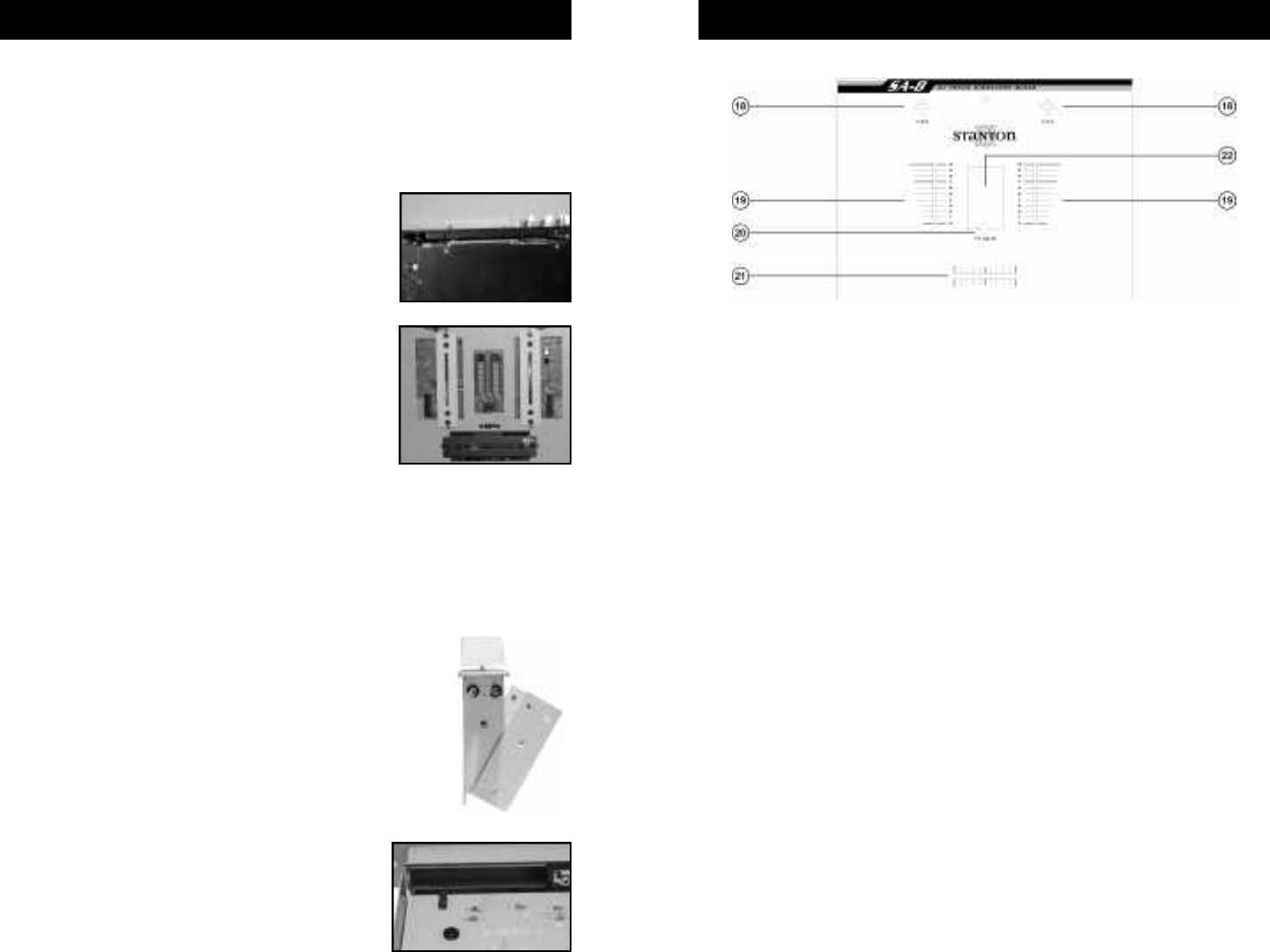
(10) Cue Level – Controls the head-
phone output (23) level.
(11) Rumble Filter – Rumble is a term
used to describe mechanical vibrations
traveling through the turntable into the
stylus and being amplified as low fre-
quencies. The rumble filter will cut
these frequencies off and prevent feed-
back from the turntable reaching the
output of the mixer. The rumble filter is
adjustable from 0 Hz (OFF) to 20 Hz
(The human ear can only hear above
16 Hz).
(12) Booth – Controls the level of the
BOOTH (42) output.
(13) Master – Controls the overall vol-
ume level of the mixer.
(14) FX1 / FX2 – These 2 buttons
assign the FX Loop to its respective
channel. the FX loop can be assigned
to both channels at the same time.
(15) Hi, Mid, Low – Adjusts Hi, Mid, and
Low frequencies (+ 9/-20 dB) for PGM
1 & 2.
(16) Input Selector – Selects the input
source (FX / PHONO / LINE) for each
channel. When FX is selected the FX
RETURN is routed to that channel and
the line fader for that particular channel
becomes the level control for the audio
coming back from the effects proces-
sor.
(17) Aux / FX Cue – This button allows
you to cue your FX RETURN or AUX
input depending on the position of the
AUX/FX Selector switch (37).
(18) OSII – Optical Scratch switches
for each channel. This is simply an
on/off switch used to perform various
scratch tricks.
(19) Line Faders – Controls the chan-
nel output level. The curve of the line
fader is determined by curve control
switch (25) located on the front panel.
The line fader may also be reversed by
using the line fader reverse switch (24)
on the front panel.
(20) Headphone Mute Switch – Mutes
headphone output (23). Mute is on
when red LED is illuminated next to
switch.
(21) Crossfader – Fades the overall
mixer output between channel 1 and
channel 2. The curve of the crossfader
is determined by the CF Curve knob
(27) located on the front panel. The
crossfader may also be reversed by
using the CF Reverse switch (28) on
the front panel.
(22) Input Level Meter – Displays each
channels input (in dB) level with peak
hold. When indicator shows a red bar
DESCRIPTION OF FUNCTIONS
REMOVING A FADER
1. Make sure mixer is powered off and power supply
is disconnected from back of mixer.
2. To remove the lower faceplate, take off all the
fader knobs and then remove the 4 screws located
on the side of the mixer (2 on each side). Lift up on
the faceplate and it will slide off.
3. Remove the fader to be cleaned or replaced by
unscrewing the 2 outer screws on the fader plate
(removing the 2 inner screws will detach the fader
from the fader plate).
4. Disconnect the fader from mixer by removing the
connector on the bottom of the fader.
REPLACING A FADER:
1. Once the fader has been removed, simply plug the connector into the new
fader.
2. Place fader back in mixer and replace 2 outer screws to secure fader.
CLEANING A FOCUS FADER:
1. Once fader is removed from unit, you will need to separate the fader casing
from the fader itself to have access to inner suspension. The
fader casing is the metal piece that covers 3 of the sides of
the fader. To remove the casing pull apart the two flaps on the
side of the fader and remove casing.
2. Once casing has been removed wipe down the rails with a
cotton swab to remove excess dirt.
3. Lubricant can be applied to the rails. Thinner liquid-like
lubricant is suggested but if you desire a slower or more resis-
tant focus fader you may use grease like lubricant.
FADER CLEANING AND REPLACEMENT
After constant scratch use the SA-8 faders may need to be cleaned and lubri-
cated from time to time. This will ensure long life and keep a smooth feeling
throughout the fader's lifetime. Follow the instructions below to lubricate and
clean your faders:



